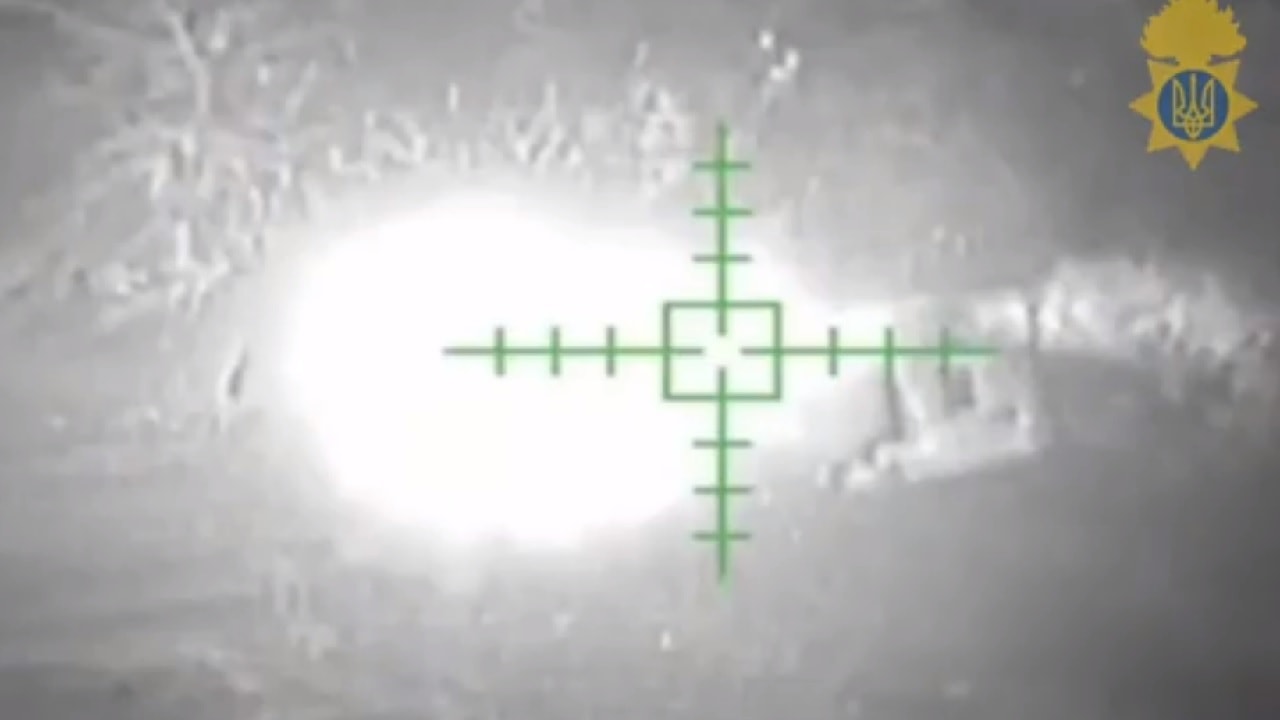Russian Air Defense System Destroyed by Ukrainian Loitering Munition – A social media post shared by Ukraine Weapons Tracker (@UAWeapons) this week should have had the hashtag #irony. It purported to show a Russian 9A310M1-2 TELAR of the Buk-M1-2 air-defense system after it was destroyed in a Ukrainian loitering munition strike near the town of Panteleimonivka in the Donetsk Oblast.
The urban-type settlement, located just 34.3 km (21 miles) from Donetsk city, has been controlled by the pro-Russian Donetsk People’s Republic militia forces. It had a pre-war population of around 7,700 people. The town is believed to have been largely destroyed in the recent fighting.
Air-Defense System Failed to do its Job
The Buk is a family of self-propelled, medium-range surface-to-air missile systems originally developed in the Soviet Union, and it remains in use in a number of former Soviet republics including Russia, which has continued to modernize the platform. It was designed to counter cruise missiles, smart bombs, fixed- and rotary-wing aircraft, and unmanned aerial vehicles (UAVs).
The 9A310M1-2 TELAR was developed in the 1990s to engage tactical Lance-type ballistic missiles, and aircraft missiles at ranges up to 20 km. According to GlobalSecurity.org, during combat operations, the platform is able to detect a target, determine its IFF status, and automatically track the target and identify its type. It can then computes the flight mission and launch assignment, launches a missile, transmits radio correction commands to the missile, and evaluates the firing results. The air-defense systems are operated by a crew of four.
Despite its capabilities, this air defense system was unable to counter the Ukrainian loitering munition. Though the post didn’t make clear what type of ordnance was employed, it is known that Kyiv’s forces have relied on a variety of platforms including the American-made Switchblade 600, a type of loitering munition designed specifically to take out tanks and other armored vehicles.
In addition, a number of Ukrainian firms – including One Way Aerospace’s Scalpel attack drones; and Deviro, maker of the RAM II UAV – have stepped up to produce loitering munitions for the war effort. Moreover, since the start of the war, Ukrainian warfighters have been utilizing commercial “off-the-shelf” drones to carry and then drop small ordnance including hand grenades, small warheads, and even Molotov cocktail-style gasoline bombs with devastating efficiency.
Drone On
Such compact, and more importantly low-cost, weapons have been crucial to Kyiv’s asymmetrical warfare – and have destroyed hundreds of Russian vehicles in the now-year-long war.
Loitering munitions and drones have helped Ukraine hold back Russia in the Donbas region and likely could play a role in the expected Ukrainian offensive.
#Ukraine: A Russian 9A310M1-2 TELAR of the Buk-M1-2 air-defense system was destroyed in Panteleimonivka, #Donetsk Oblast, reportedly by a Ukrainian loitering munition strike. pic.twitter.com/4a6qQb4dLQ
— ???????? Ukraine Weapons Tracker (@UAWeapons) April 11, 2023
It was also just days ago that a Russian Lancet loitering munition was also used to destroy a Ukrainian 9A310M1 TELAR Buk-M1 air-defense system, also in the Donetsk region. Clearly, this is a case where it may have been the operators and proof that drones can’t be easily stopped by an anti-aircraft platform, especially one developed in the Soviet era.
Author Experience and Expertise:
A Senior Editor for 19FortyFive, Peter Suciu is a Michigan-based writer. He has contributed to more than four dozen magazines, newspapers, and websites with over 3,200 published pieces over a twenty-year career in journalism. He regularly writes about military hardware, firearms history, cybersecurity, politics, and international affairs. Peter is also a Contributing Writer for Forbes and Clearance Jobs. You can follow him on Twitter: @PeterSuciu.

